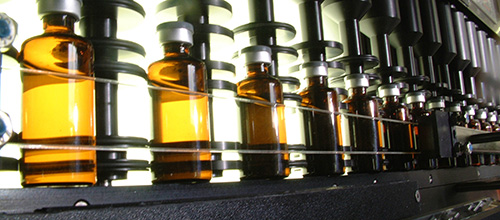USP visual inspection expert answers question regarding AQL testing
Recommendation

Thursday, 12 February 2026 9 .00 - 17.00 h
Question:
We carry out the visual inspection of lyophilisates (freeze-dried products in the following way:
- 100% visual inspection of each vial (Semiautomatic inspection as well as manual inspection depending on the line)
- AQL inspection is done in accordance to the ISO standard (315 or 500 vials, depending on the batch size)
- Testing of Visible particles in the Laboratory is done in accordance with EP (sample size: 20 or 32 vials)
Since that there is a lot of discussion concerning particle testing and the Acceptable Quality Levels, please provide your opinion about the requirement for an AQL inspection of visible particles. Is it acceptable to define AQL limits of 0.65 for visible particles or has the AQL to be 0 ?
Answer by Dr Scott Aldrich*:
Your approach is very good. Considerations for inspector training (how capable are they?) and use of the same conditions for inspection at each test point are important.
What are the expectations for physical quality for liquid and lyo products? Hypothetically they are the same; however, how can one possibly 100% inspect the content of lyo or solid dispersion products? Therefore, a full and qualified inspection for package defects and surface particles is conducted for non-liquid products, along with statistical sampling of the batch population. You are doing that. Sampling follows typical rules such as ANSI Z1.4 2008 (historical Mil. Std. 105E). A PDA survey found 70% of participant firms utilized ANSI Z1.4 and 10% utilized ISO 2859.1.
Additionally, a comprehensive definition of defect criticality is important. That is, what are critical, major and minor definitions for the package and contents and what are their acceptance criteria? Zero tolerance is not possible for probabilistic inspection.
In AQL auditing, defect categorization for a majority of firms (PDA Survey) were:
- Critical: 0 to 1.0% (0.10% median)
- Major: 0.1-3.5% (0.65% median)
- Minor: 0.5-5.0% (4.0% median)
Answer by Berd Renger:**
For AQL testing you must define different AQL s for different defects. E.g. a cracked lyo cake is something less critical than a damaged closure component.
Companies often define an AQL of Zero for critical defects (like the damaged closure component that may corrupt sterility) although there is no AQL "0". This is impossible in probabilistic inspections and it should read 0.01.
AQLs could be (just as examples):
- 0.01 for critical defects, e.g. visible particles of a certain size
- 0.4 for major defects like under fill or overfill and collapsed cake / lidded cake and visible particles below a certain size
- 1.0 for cracked lyo cake
- 1.5 for scratches outside
This is depending on the type of product and the route of administration and can't be define on a generic level.
*Scott Aldrich is member of USP Dosage Forms Expert Committee and principal consultant at Ultramikro, LLC
** Dr Bernd Renger is Immediate Past Chair of the European QP Association and runs his own consultancy business




